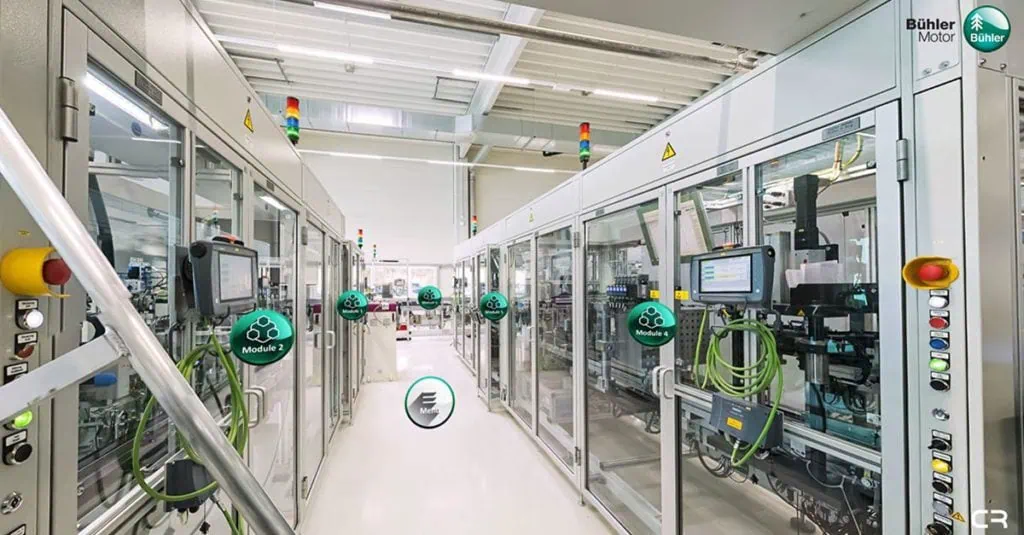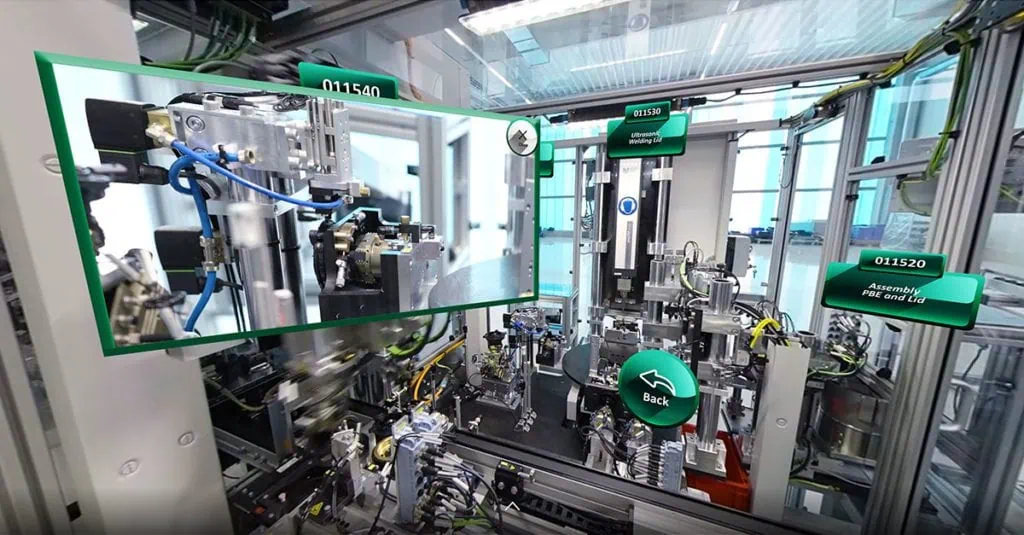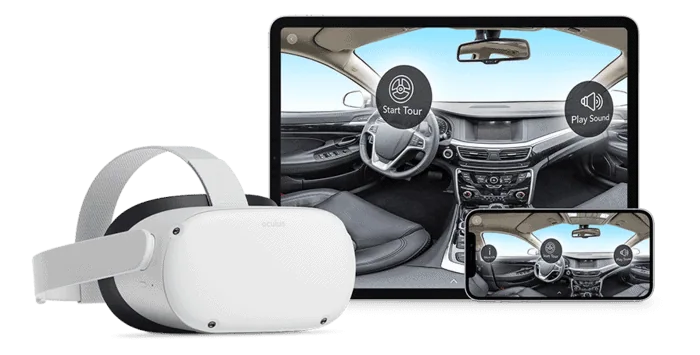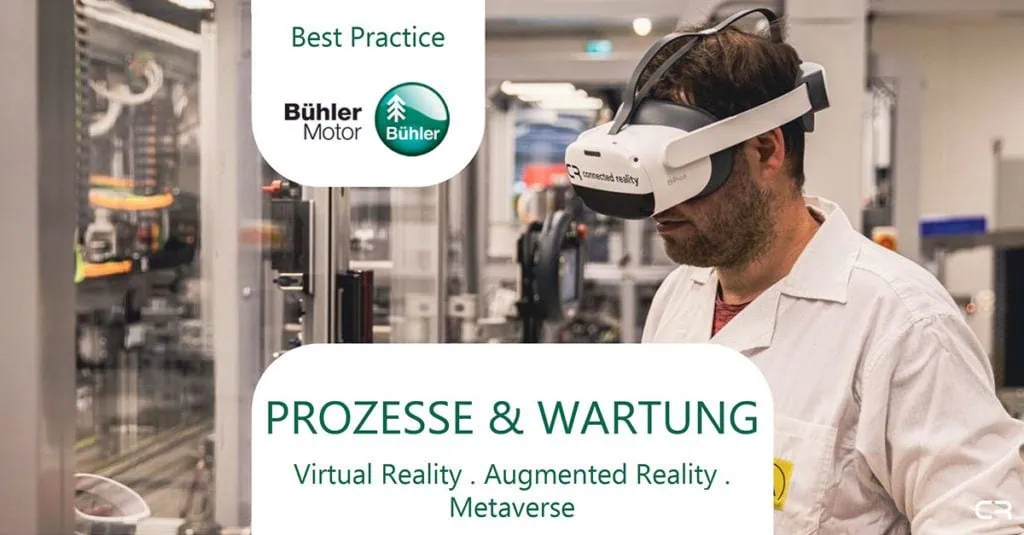Immersive training in Virtual Reality: How Bühler Motor GmbH manages staff machine training remotely
Passing on skills and knowledge has always been a vital aim for society, but also a crucial success factor for companies. This success in learning is not simply dependent on the content, but just as much on the delivery. And for businesses, decisive factors are also time, costs, and remote staff. Staff training doesn’t happen immediately, and it’s not always possible or cost-effective to train your team on-site. That’s where immersive technologies such as Virtual Reality come in – which Bühler Motor GmbH, a system supplier and mechatronic drive solution specialist, recently discovered. The first step of their innovative training and onboarding solution was in VR.
1. Immersion leads to faster learning
Virtual Reality provides an incredibly immersive user experience: the learner is placed directly into the virtual learning environment, which has proven to speed up the learning process. A study by PWC found that trainees absorbed learning content up to 4 times quicker using VR. They could then also apply their learning with greater confidence. In 2018, the Johnson & Johnson Institute came to the same conclusion: Here, surgeons used VR to practice an operation they had never done before. The control group solely used conventional teaching methods. The results? None of the control group could carry out the procedure in the lab, while 83% of the VR-trained surgeons could successfully perform the surgery with minimal help. VR training is proven to significantly improve learned knowledge – comprehensively and sustainably.
Watch the video on Bühler Motor GmbH: Immersive and location-independent VR training and onboarding on mobile devices.
2. Regular repetition leads to sustainable learning
VR allows for learning environments to be mapped virtually in the most realistic way. This means users can practice certain processes over and over again, independently, until they feel confident enough to apply their skills safely in real-life situations. This repetition in a realistic context helps anchor long-term process learning.
3. VR environments are risk-free
Another advantage of Virtual Reality: it’s ideal for training teams on risky processes or dangerous machines. Learners in VR environments aren’t at any physical risk and can’t accidentally damage expensive work equipment. Learners can experience hands-on all the possible errors and dangerous situations, which perfectly prepares them for real emergencies.


Bühler Motor GmbH: Immersive, location-independent VR training and onboarding on mobile devices
- The solution had to be stable
- Global deployment was available
- Future viability with consistent updates
- Use was independent of end devices
Virtual Reality: Pre-destined for training & onboarding




